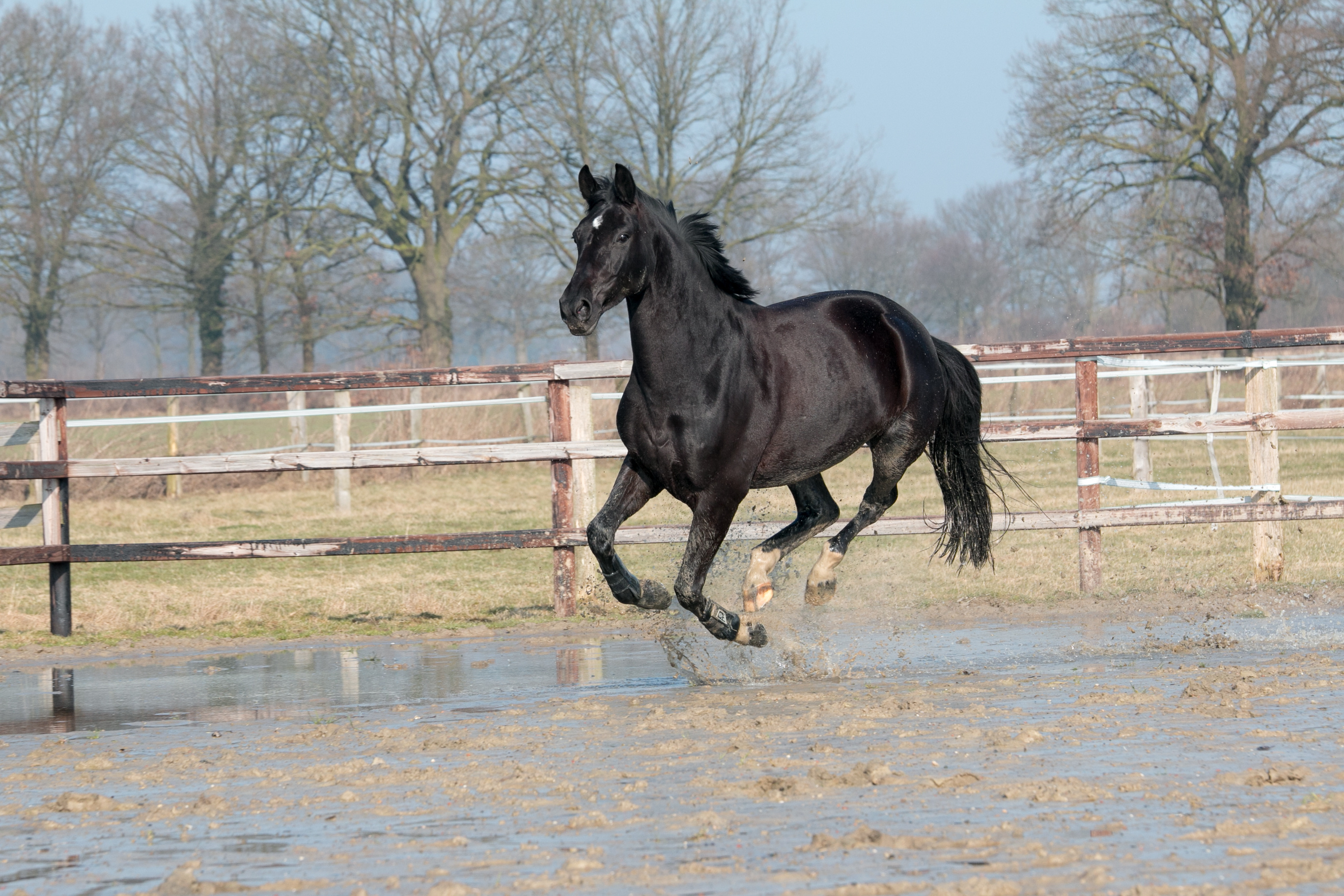Slip and fall injuries in horses
- January 5, 2023
- ⎯ Christine Barakat with Melinda Freckleton, DVM
With muddy footing comes the increased risk that horses will slip or even fall. You may not see the incident itself, but the damage done can often be a clue to what went down.

• Radial nerve paralysis is a common injury in horses who do the “splits” with their forelegs. A horse with radial nerve paralysis is unable to advance the limb, making the problem look alarmingly like a fracture, but he can still bear full weight on it comfortably. Call your veterinarian right away if you suspect your horse has this type of injury; a horse with mild radial nerve paralysis can make a full recovery within days with anti-inflammatory medications and DMSO0. Severe cases may take months to resolve.
• Pulled groin muscles occur when a horse does the splits with his hind legs. After this injury, he is likely to be obviously lame and reluctant to move. If he does move, he may have a “mincing” or crooked gait. The treatment is rest and anti-inflammatories, followed by a conservative reintroduction to activity. Most horses will recover without complication.
Click here for four winter-footing hacks.
• Contusions and bruises can occur nearly anywhere on a horse’s body during a fall. Treat these as you would an injury from any other cause—with cold therapy in the initial aftermath to control swelling and heat therapy later to encourage circulation and “cleanup” of the cellular debris.
• Head injuries can be the heartbreaking result of a particularly “hard” fall or one that results in impact with a fence or other structure. A horse with a head injury may be blind, disoriented or unable to stand. If you suspect your horse has a head injury, call your veterinarian immediately and do not attempt to move him. Even if the horse is standing, he may panic or fall, injuring himself or others nearby. Clear the area as best as you can and wait for help to arrive. There are medications that can help reduce swelling of a horse’s brain, but the prognosis is guarded at best.
The best way to prevent slipping injuries in horses is to pay attention to footing conditions, both where you ride and where you turn out your horses. Go slowly over trails or in arenas where the ground may be slick. Most horses on pasture will avoid bad footing when they have the option, but a cavorting horse can encounter an unexpected slippery patch of grass or mud. If you have a space you think is unsafe, keep horses off of it until conditions improve.
This article was originally published in EQUUS #486.
Don’t miss out! With the free weekly EQUUS newsletter, you’ll get the latest horse health information delivered right to your in basket! If you’re not already receiving the EQUUS newsletter, click here to sign up. It’s *free*!








